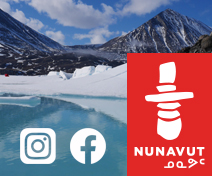Wildlife Viewing

Call of the Wild
By Hans Tammemagi
Canada’s vast, varied terrain provides a habitat for countless creatures, and the same can be said of its waterways. After all, the land is dotted with lakes, laced by rivers and lapped by three oceans. Even the skies here are crowded because this country is home to four major north-south migratory flyways and boasts nearly 600 Important Bird Areas. As a result, it supports more kinds of wildlife than you can shake a camera at. Here are some of the most memorable, with tips on where to find them.
Living Large
Canada is blessed with several species of bears, including iconic polar bears. White, like the snow of their northern habitat, they are considered the largest of all terrestrial carnivores. In Churchill, Manitoba, the “Polar Bear Capital of the World,” you can take a tour from mid-October to mid-November aboard a special tundra vehicle that lets you safely get close to them.
Grizzlies, who reside mostly in the western and northwestern part of the country in forested and mountainous areas, can be seen from spring to fall (they hibernate in winter) on cruises along the Great Bear Rainforest or on several guide-led outings. They can also be viewed at B.C. sanctuaries like Grouse Mountain in Vancouver, Khutzeymateen Provincial Park outside Prince Rupert, and Kicking Horse Resort near Golden.
Black bears, smaller than grizzlies although still formidable, are found throughout Canada and it’s not unusual to spot them while driving in remote areas or canoeing. Their fur can be black, reddish- brown and occasionally even white, as evidenced in the ghostly kermode or spirit bear found along the central and northern B.C. coast. Although black bears, like grizzlies, are shy and generally avoid humans, if you encounter one, keep a safe distance away.
These big bears are an extraordinary sight, yet the spine-tingling sound of a wolf in the wild is equally impressive. The largest members of the dog family, wolves hunt in packs of six to ten throughout remote areas. Private tours of the Wolf Centre in Haliburton Highlands takes visitors on an evening forest hike for “Wolf Howls” where you can imitate a howl, and hope to receive answering cries.
Hoofing It
Nothing sets the pulse beating like the sight of a bull moose with enormous antlers stretching 1.8 m (6 ft.) across. Moose are present in most forested wilderness areas and, being adept swimmers, are often seen in wetlands. Gros Morne National Park, Newfoundland is an excellent viewing area all year. Bull moose can be aggressive, particularly during the autumn rut. Drive carefully in moose country, especially at night; moose encounters can cause serious damage.
Large herds of bison/buffalo once thundered across the plains of North America providing livelihood for Indigenous Peoples, but they were hunted close to extinction during the 19th and 20th centuries. Since then they have made a partial recovery and herds can be seen in Wood Buffalo National Park in northeastern Alberta and southern Northwest Territories, as well as Prince Albert National Park in Saskatchewan and Riding Mountain National Park in Manitoba.
It is awe-inspiring, but rare, to see an immense herd of handsomely antlered caribou stretching far across the tundra. In September, visitors may view the annual migration of one of the largest herds in the world at Leaf River Lodge in the Northern Québec region of Nunavik (www.leafriverlodge.com).
Also in Nunavik, week-long packages offered by Inuit Adventures and Ungava Polar Eco-Tours include excursions with Inuit guides in search of the polar bear in its natural habitat, as well as encounters with other members of the Arctic wildlife, such as small herds of muskox stranded on islands offshore, tundra wolves, various species of seals and even whales (www.inuitadventures.com or www.ungavapolarecotours.com).
Diving In
The beaver, Canada’s national symbol, is an aquatic rodent with a large paddle-shaped tail and prized thick fur. Found in waterways throughout Canada, beavers are industrious, felling trees with their sharp buckteeth and building lodges and dams. Primarily nocturnal, they are best viewed at dusk. One popular place to spot them is Jacques-Cartier Park near Québec City.
Beluga whales, not much bigger than dolphins and white in colour, are called the canaries of the sea for their constant singing. Every summer about 3,000 belugas gather in the Churchill River delta in northern Manitoba. You can get close by boat tour and listen to them chattering via a hydrophone. Belugas are so gentle you can venture out on the water in kayaks for a once-in-a-lifetime experience.
Orca, a.k.a. killer whales, cruise all oceans, but are particularly abundant around Johnstone Strait near northeastern Vancouver Island and in the Salish Sea near Victoria. Extremely intelligent animals that live in matrilineal pods, their high dorsal fins slice elegantly through the water. Numerous boat tours are offered. You may also see grey whales up to 15 m (49 ft.) long, especially around Tofino during their migrations in March and October, as well as dolphins, seals and sea lions.
The Atlantic coast and the St. Lawrence River are also prime locales for whale watching. Every summer some 12 species—including minke, humpback, finback and right whales—swim into the Bay of Fundy to mate, play and feast on the bountiful food churned up twice daily by the powerful tides.
Salmon live in both the Atlantic and Pacific oceans and are renowned for spawning, that is fighting their way upstream to lay eggs and die in the same freshwater location where they were hatched. Spawning salmon can be seen in fall and the first half of winter at many locations, often far inland.
Flying High
Featured on the dollar coin, loons are duck-sized birds, regally patterned in black and white. Excellent swimmers, they catch small fish in fast underwater chases. Other than in the extreme north, their eerie, echoing calls can be heard on numerous lakes, especially in the Canadian Shield. Canada geese, another national icon, are so common across the country they have become a pest at some golf courses and parks. In the air, however, they fly in an elegant V-formation.
The bald eagle, a noble raptor most associated with the United States, actually builds enormous nests in tall trees across most of North America. The bald eagle, with its white head and tail, is particularly abundant in western British Columbia. The best time to see eagles in B.C. is in fall and the first half of winter when they gather, sometimes in the thousands, at spawning sites such as Brackendale and the upper Harrison River.
The Bay of Fundy provides another avian spectacle. In late July and August, more than two million tiny sandpipers flock into the coastal region to gorge on shrimp before flying south. Mary’s Point in New Brunswick and Evangeline Beach in Nova Scotia are two top places for viewing.
Newfoundland is also a hot spot for birders. The Witless Bay Ecological Reserve, for instance, has North America’s largest Atlantic puffin colony, while the Cape St. Mary’s Ecological Reserve is known for razorbills, cormorants, kittiwakes and dive-bombing gannets.
Much More
This is but a small sampling, a teaser, to encourage you to get outdoors and see the vast array of creatures that live in Canada.






